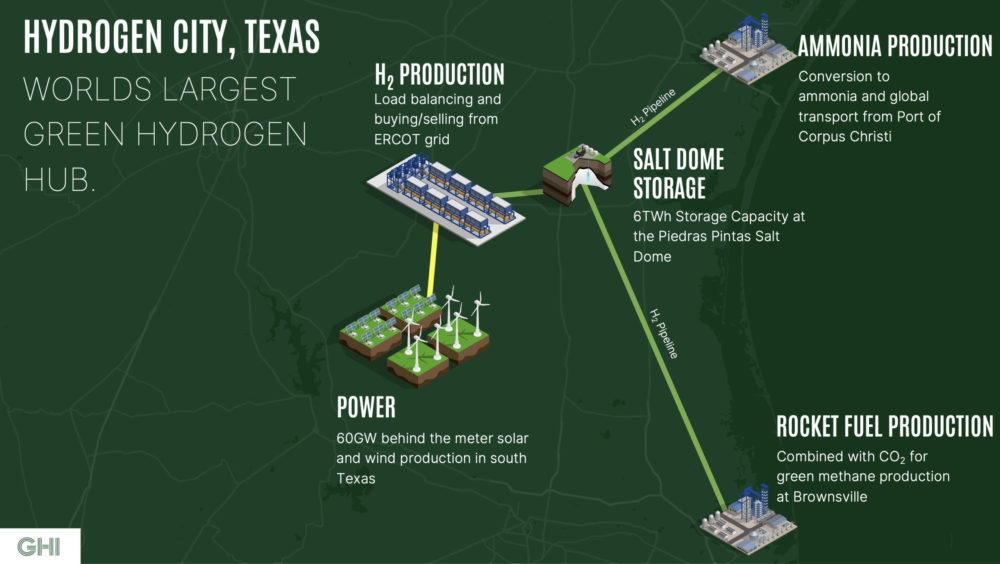Plans for a ‘Hydrogen City’ backed by Aussie-based Energy Estate
Energy
Sydney-based renewable energy project developer Energy Estate is partnering with Austin start-up Green Hydrogen International (GHI) to create the “world’s largest” green hydrogen and production hub in south Texas, dubbed ‘Hydrogen City’.
The project will be an integrated green hydrogen production, storage, and transport hub with the capacity to grow to 60GW in size, producing more than 2.5 billion kilograms of green hydrogen per year.
Centred around a hydrogen storage facility in the Piedras Pintas Salt Dome located in Duval County, it is expected pipelines will deliver the green hydrogen to Corpus Christi and Brownsville, where it will be turned into green ammonia, aviation fuel and other products.
GHI’s founder and CEO Brian Maxwell said the project will be built in phases with the first phase expected to begin operations in 2026, consisting of 2 GW of production and two storage caverns at the Piedraas Pintas salt dome.

While one of the major challenges in the energy transition is the need for energy storage on a large scale, a CSIRO study has found underground storage is the leading option due to safety and cost.
The process involves the storage of hydrogen in engineered caverns created in thick, salt deposits – which Maxwell says is critical to the scaling up of production as it allows for maximum utilisation of electrolysers and serves as a buffer between wind and solar production.
“Eventually, over 50 caverns can be created at the Piedras Pintas salt dome, providing up to 6TWh of energy storage and turning the dome into a major green hydrogen storage hub, similar to the role Henry Hub plays in the natural gas market,” he said.
Caverns are created by drilling into the salt dome and injecting the rock with water, dissolving the salt, and resulting in brine – which is extracted and leaves a large cavity.
To store the hydrogen, hydrogen electrolysers convert water into hydrogen by using renewable energy from solar and other sources.
Back in 2020, German researchers at the Institute for Energy and Climate Research found that the energy density of salt caverns can vary between 214 kWh and 458 Kwh per cubic meter, with the amount of storage capacity increasing depending on how deep the salt structures are.
Energy Estate’s Simon Currie told Stockhead Texas is “right up there with the best locations in the world” in terms of renewable energy capacity due to its combined resources, great infrastructure, government support, and low building costs.
“Building transmission lines is difficult but building pipelines is much easier given their pre-eminence for oil and gas, meaning you have rights to build pipelines,” he said.
Negotiations are ongoing with respect to end use options for GHI produced green hydrogen but according to the company, the plans for Hydrogen City “are large enough that eventually the project could supply multiple types of customers.”
“We see Hydrogen City becoming one of the largest H2 production centers in the world, supplying many different customers with 100% clean H2 fuel,” Maxwell said.

Mitsubishi Power, a maker of gas turbines and Magnum Development – the owner of salt caverns for liquid fuel storage, are developing the Advanced Clean Energy Storage (ACES) Project in Utah which aims to build a storage facility for 1,000 megawatts of clean power, partly by putting hydrogen into underground salt caverns.
The project will combine various technologies such as solid-oxide fuel cells, renewable hydrogen, and compressed air storage in hope to produce 150,000 MWh of renewable power storage capacity during the first phase in 2025.